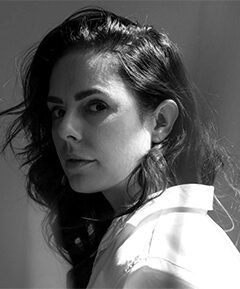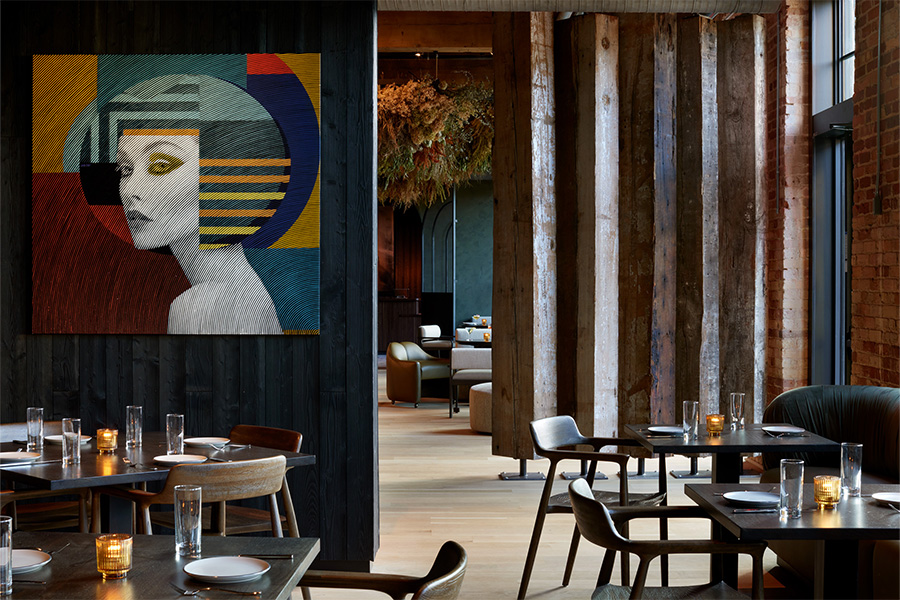As the world continues to navigate the COVID-19 pandemic and adapt to these unprecedented times, HD is checking in with members of the hospitality industry around the globe to find out how their businesses are being impacted and what they anticipate will change down the line.
Nancy J. Ruddy, CetraRuddy

What are the biggest challenges you’re facing?
The most important, and therefore challenging, task is to keep our team of 100 people passionate, creative, and effective while working remotely. We are a very close community in the office, which has generated great collaboration and business/personal relationships. We not only design together, but we celebrate, eat, and do joint activities together. To continue the spirit of our firm’s DNA, we have instituted a few new things in addition to the usual chat and electronic connections. For instance, every morning, a different person sends out an email to the whole team that is either inspirational, humorous, or creatively exciting. This way, we all start the day together with a smile on our face and a sense of community.
What is your current work situation?
Of course, we are working remotely. We are very busy working on projects that we had in house before the shutdown. Many clients and prospects are trying to make sense of what the world will be like when we get through to the other end, so new work is slower. Early into the pandemic, we formed an internal post-COVID-19 strategy team to research how we, as designers, can be part of the solution for creating community and socialization in hospitality, commercial, and residential environments. And we are working with clients on solutions for people re-entering the workforce.
What we miss the most is the personal interaction with our team and our clients. There is nothing like brainstorming around a table, feeling the tactile nature of materials we use, and sharing these elements with our clients.
Have you had to make any changes to your team?
It took us many weeks to make the hard decisions we knew we should make to keep the firm financially healthy. We let go of a small number of people, and we cut salaries. We have maintained all employee benefits, including healthcare. As a thank you to our hardworking team, we have extended our Summer Fridays. As we all agree, the design team’s health and happiness is our key concern.
What are some of the positive effects of working in these new ways?
People’s true spirits come out during crisis. Everyone in the office has been so supportive of the partners in understanding that this is a very difficult time. I believe we have grown closer. All of the extra time I thought we would have, since we’re not traveling to clients and project sites, has been sapped up by endless Zoom meetings. I do believe the world has seen that five days in the office is not necessary, but I don’t believe that the need for in-person collaboration will ever go away.
What is your pulse on the industry?
The hospitality industry will be among the last to rebound. We have projects going ahead, but we did have one hotel located in Rockefeller Center that stopped moving forward, which was a heartbreak. Hotel developers are assessing what the new travel pattern will be. Additionally, we are working on restaurants around the world and concepts for destination event properties. We have had a few clients take a pause and asked us to reevaluate the positioning of properties to make sure we will be coming to market with the right product. Everything is proceeding more slowly, and we believe that some investors will sit it out for a year or two.
What does this mean for the future of hospitality?
We all miss the community spirit and gusto of dining and drinking in a restaurant or café. There will be new distancing parameters established, but the buzz of sociability and sharing food with others cannot be replaced. I feel confident the industry will have a resurgence, and restoring the jobs lost in hospitality is more important than the taste of the food.
Lastly, share some good news! Have you done anything to stay busy in these crazy times?
My days start with a long 7 a.m. walk in Prospect Park in Brooklyn. I have watched winter turn to spring with crocuses popping out of the ground and flowering trees coming to blossom. Starting every day with this quiet meditation sets me up for a creative day. Truthfully, my life has remained consistent with the person I was before this crisis. Caring about the people in my life and in the office remains paramount.
Fritz Mesenbrink + Jeremy Pelley, OMFGCO

What are the biggest challenges you’re facing?
Jeremy Pelley: The uncertainty. As leaders to our team, people are looking to us for answers through all of this, and truthfully, no one knows what is going to happen from week to week, including us. So, not having a clear path forward and not being sure of the ultimate outcome has been very challenging.
Fritz Mesenbrink: Not seeing the light at the end of the tunnel makes this more challenging. Everyone in the studio misses the creative energy we feel when we’re all in a room together.
What is your current work situation?
JP: We were already working remotely twice a week for over a year, so we had systems in place that made the transition easier, but it’s still hard not being able to be in the same room as each other. The hardest decision we had to make was to cut leadership salaries by 100 percent and cut our employees salaries by 20 percent, but luckily, everyone was open to it and understood.
What are some of the positive effects of working in these new ways?
JP: It’s been nice to have some quiet moments sprinkled throughout the day, and it’s been great seeing what we need a studio for. It will make an impact on how we use the studio once we get to do so again.
FM: It’s made me think about what travel is necessary in the future. We’re able to do so many things remotely, but I do still value an in-person meeting and am looking forward to having those again.
What is your pulse on the industry?
JP: We are staying busy with our existing clients, but we have noticed that our new business pipeline has slowed tremendously. Even jobs that we won have paused, holding back on kicking things off until things feel a little more certain. We are doing our best to stay connected with clients with frequent check-ins and new approaches to how we might work together now that we are solving for a post-pandemic world.
What does this mean for the future of hospitality?
JP: The pandemic and the post-pandemic world that’s emerging, has taken the wind out of the sails of experience-based design. It’s hard to engage all the senses when you can’t use all of your senses to experience something anymore. It will be important to focus on the feelings that come with our proposed solutions—in some cases, it might not be worth opening back up to an entirely new less-fun, less-engaging experience.
FM: ‘Normal’ will continue to evolve and the industry will have to react accordingly. The process is going to have to be context-based and specific to each instance. The same things won’t apply to all lobbies. Outdoor space will be super desirable in the next few months. Hotels are going to talk about how clean they are.
Lastly, share some good news! Have you done anything to stay busy in these crazy times?
JP: I bought a house in the woods, so I am looking forward to the respite that my new way of life will bring. Also, we’ve been doing what we can to have remote happy hours, remote hangs, and even a few real-time socially distant hangs. Anything we can do to feel like a normal human is a welcomed activity.
FM: I was out at my cabin with my family for the first seven weeks. There are a lot of projects to do there and more projects at our house in Portland. Aside from that, I’ve been helping my son with his schoolwork when I can, lots of board games and even video games with him, and I’ve started baking bread.
Ashley Wilkins, Islyn Studio

What are the biggest challenges you’re facing?
Having projects go on hold. Not being able to work out of our office building but still being charged rent. Not knowing when our industry will normalize and stabilize, and finding new ways to pivot our business model for an unforeseeable amount of time. There is no way to know for certain what the future holds, so we have to be more flexible and creative than we have ever been before.
What is your current work situation?
Surprisingly, our work situation has been great, our team is collaborating better than ever, and we haven’t had any issues communicating remotely. One initiative that we have started is getting our full staff involved in new business development ideas. We have encouraged each teammate to explore a specific theme of potential new clients, collaborations, and ways we can work with our current clients to help their businesses during these times. We, unfortunately, did have to furlough a beloved young employee and are hoping to bring her back on fulltime as soon as possible.
What are some of the positive effects of working in these new ways?
One of the positives is how its brought our studio together. With some projects on hold, it’s allowed us to devote more time and creative thinking to the ones we still have moving. The current circumstances have pushed us to do some of our best work and develop new designs and ideas we’ve never seen done before, which is exciting.
What is your pulse on the industry?
A lot of our projects have been put on hold. The ones that are staying on track are larger hotels and a few years out from opening, which mitigates some of the fears other clients, who had projected openings for this year, are facing.
What does this mean for the future of hospitality?
It will be awhile until traditional dining and travel experiences get back to normal, and I foresee a resurgence of fine dining. I also predict we will see a lot more domestic travel to locations that are accessible by car or train—meaning people might seek safer travel options at smaller boutique properties in areas a few hours outside of major metropolitan cities. Maybe top New York chefs and bartenders will move to these areas and have a food renaissance in places where it didn’t exist before.
Lastly, share some good news! Have you done anything to stay busy in these crazy times?
My partner and I have been challenging ourselves to cook a new dish every day, which has been really fun. We may even create a quarantine cookbook. We also have our five-year anniversary coming up, and we usually take vacation around this time. Since we can’t go anywhere, we are going to put our skills to work and create a really special dinner based on a place we would have gone, which includes the sounds, smells, flora, fauna, and even our outfits. We’re debating between Oaxaca or some far away island cuisine.
Related stories:
3 Designers on Teamwork and Forging Ahead
4 Designers and Architects on the Future of Hospitality
3 Design Duos on Making the Most of Trying Times
For more COVID-19-related news and stories from HD, click here.


